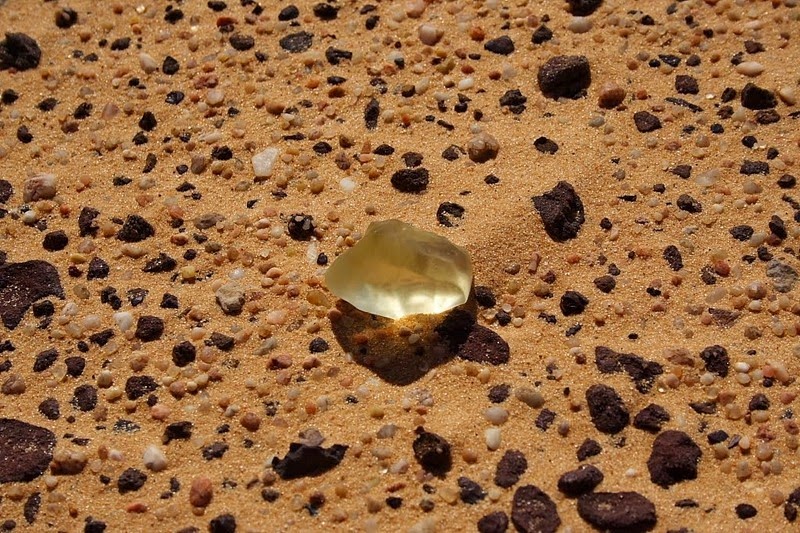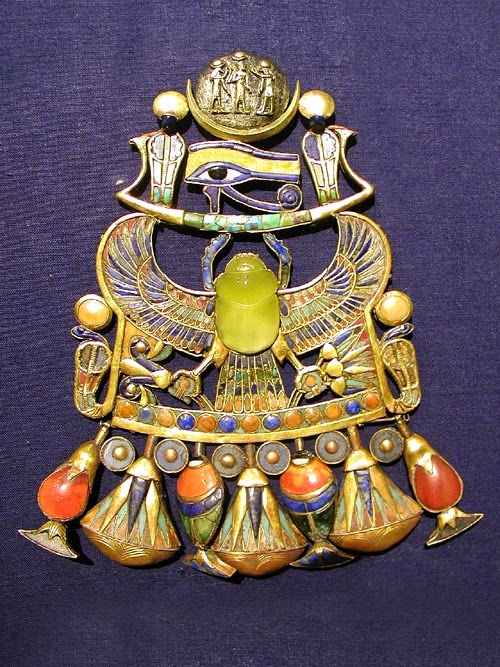Between the borders of Egypt and Libya is the Great Sand Sea, an enormous sandy desert that stretches about 650 km from north to south and 300 km from east to west, covering an area the size of Ireland. Prevailing winds have organized this great sand mass into huge longitudinal crested dunes rising 100 meters high at places and stretching uninterrupted for hundreds of kilometers, separated by flat corridors about a kilometer or two wide. In these long narrow gaps are areas where the underlying bedrock is exposed. In these exposed surfaces a curious natural glass is found.
The so called Libyan Desert Glass is the purest natural silica glass ever found on earth. The glass is generally yellow in color. It can be very clear or it can be a milky, and even contain tiny bubbles, white wisps, and inky black swirls. Over a thousand tons of these glass are strewn across hundreds of kilometers of bleak desert. Most of these are the size of pebbles polished smooth by the abrasive action of the blowing sand. Others are chunks of considerable size and weight. The biggest piece ever found weighed around 26 kg.

Natural glass, such as Libyan Desert Glass, can be formed either by lightning strike, or volcanic activity or meteorites striking the earth. The Libyan desert glass has been dated as having formed about 26 million years ago, which made scientists assume that the glass here was formed when a meteorite struck earth around this time, but the absence of an impact crater pose problems for this theory. (In 2007, a circular feature was discovered using satellite images but evidence of it being an impact crater is slim to none.) Another theory suggest an exploding comet near the surface heating up the sand beneath it to a extreme temperatures resulting in the formation of a huge amount of silica glass.
The first scientific discovery of Libyan Desert Glass was made by an Englishman named Patrick A. Clayton in 1932, who brought the first samples back to Europe for study. However, the existence of the glass was known to man long before that. Local inhabitants in the Neolithic period made tools out of the glass, and later the Egyptians used it as jewel. A large piece of carved stone on the breastplate of the famous Egyptian pharaoh Tutankhamun was identified as none other than Libyan Desert Glass



Tutanhkamun’s pendant features a scarab (the light green stone in the center) carved from desert glass. Photo credit

Sources: Wikipedia / Our-Egypt / Sahara Gems / Science-Frontiers / Temehu



Don't know how it got there? Must be aliens.
ReplyDeletemeteor impact many many years ago!!
Delete